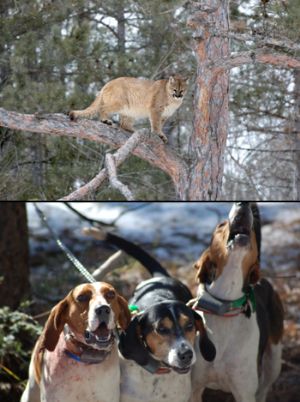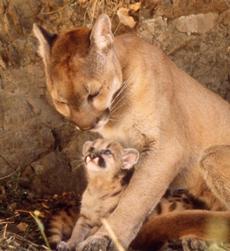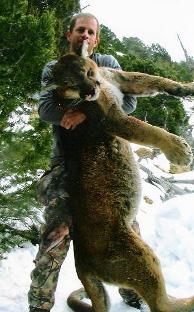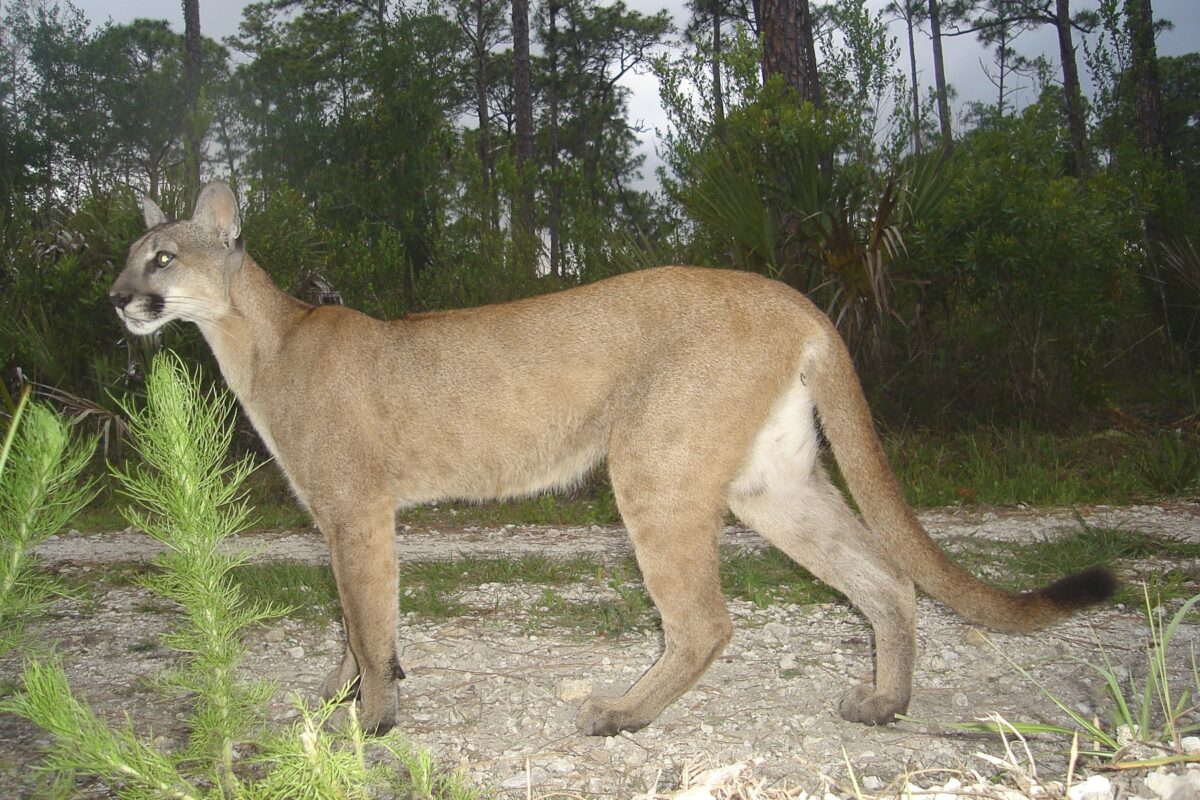
 Exposing the Selectivity Myth of Hound-Hunting Lions
Exposing the Selectivity Myth of Hound-Hunting Lions

Despite the public’s revulsion of the practice, hound-hunting is constantly being promoted as the best [for the species] method of hunting lions. Proponents point to their ability to be “selective” in killing only large trophy males, where “boot-hunters” often only see their target from a distance and can not properly ascertain whether or not the lion they are killing is a nursing mother.To test this claim of selectivity, the Mountain Lion Foundation (MLF) reviewed 35 years (1976 – 2011) of comments and reports from state game managers and biologists attending Mountain Lion Workshop symposiums. A small selection of those comments and reports are listed below:1976 – FIRST MOUNTAIN LION WORKSHOPKen Greer; Montana Fish and Game Department:
“When you’re talking with a fellow he might say he’s an experienced lion hunter and he takes just males, but when you get down to the nitty gritty of it we’ve found that this isn’t very reliable information.”Rich Poelker; Washington Game Department:
“I’ve talked to a lot of our houndsmen in Washington and I’ve come to the conclusion that once the lion is treed they’re not too selective as to sex. They do claim the ability to determine sex, and yet on one hunt with an experienced lion hunter he kept asking me what sex it was for some time after the animal was down.”Willie Molini; Nevada Fish and Game Department:
“We find that our harvest in the last three years has been 52, 53, and 54% female. Quite a number of the clients that hire guides are from eastern states, particularly Pennsylvania. I don’t know what that means, as far as the quality of the animal they want to take, but we know our guides do take quite a few female animals.”
 Harley Shaw; Arizona Fish and Game Department:
Harley Shaw; Arizona Fish and Game Department:“This thing has other ramifications — our sport kill overlaps a lot with depredations, and I think that dealing with females in the tree with kittens, the female will be taken as a sport kill and tagged, and the kittens are left at the site.”Gary Power; Idaho Fish and Game Department:
“It seems as though in most cases hunters can’t tell sex or age of lions. A hunter hunting with an outfitter in the Challis area last week killed a 38-pound kitten and paid $750 to kill it.”John S. Phelps; Arizona Fish and Game Department:
“. . . . as far as dogs catching a kitten on the ground and killing it, there is little that we can do about it.”Dick Hall; U.S. Fish and Wildlife Service:
“A lot of the hunters, including myself, probably half the time don’t know if a female has kittens until she’s dead.”1991 – FOURTH MOUNTAIN LION WORKSHOPKeith Aune; Montana Department of Fish, Wildlife and Parks’ Wildlife Laboratory:
A review of Montana’s lion hunting results from 1987 through 1991 found that two-thirds of all lion hunters killed every cat they treed, showing no preference or selectivity.
2000 – SIXTH MOUNTAIN LION WORKSHOP
Daniel Bjornlie; Wyoming Game and Fish Department:
Based on voluntary hunter surveys submitted to the Department over the past ten years (1990-2000), 89 percent of successful lion hunters said they used hounds, and 76 percent of all successful lion hunters admitted they were not selective when hunting (i.e. shot the first lion they saw).

2011 – TENTH MOUNTAIN LION WORKSHOP
Richard Beausoleil; Washington Department of Fish and Wildlife:
Even with a dead lion in hand, the agency still has a 16 to 30 percent error rate in sexing lions.
Daniel Thompson; Wyoming Game and Fish Department:
A nine year study of lion selectivity among Wyoming hound-hunters based on voluntary hunter result surveys found that while those hound-hunters who claimed selectivity on the response cards were found to have harvested slightly fewer female lions than those who did not consider themselves selective, the test of “real” selectivity is treeing a lion and choosing not to shoot it. Based on that criteria, less than twenty percent of the self-claimed selective hound-hunters were actually selective. Weather conditions and the possible closure of a hunt zone due to lion harvest limits were both critical factors that often overrode a hunter’s good intentions of being selective when choosing a trophy. Selectivity dropped even more towards the end of the season, and even the use of outfitted hunts (using professional guides) did not, at any point, decrease the number of juvenile or female lions killed.
CONCLUSION
Ultimately, the argument for the use of hounds to promote selectivity is meaningless. Although hunting with hounds could theoretically provide this option, in actuality it comes down to the shoot/don’t shoot decision of individual hunters. And, as demonstrated above, almost every lion hunter shoots the first one he trees–regardless of age, sex, or size–a propensity on the part of lion hunters which hasn’t changed despite thirty-five years of “hunter education” efforts by state game agencies.
* California banned all forms of recreational hunting of lions in 1990.



 Facebook
Facebook Twitter
Twitter Send Email
Send Email


